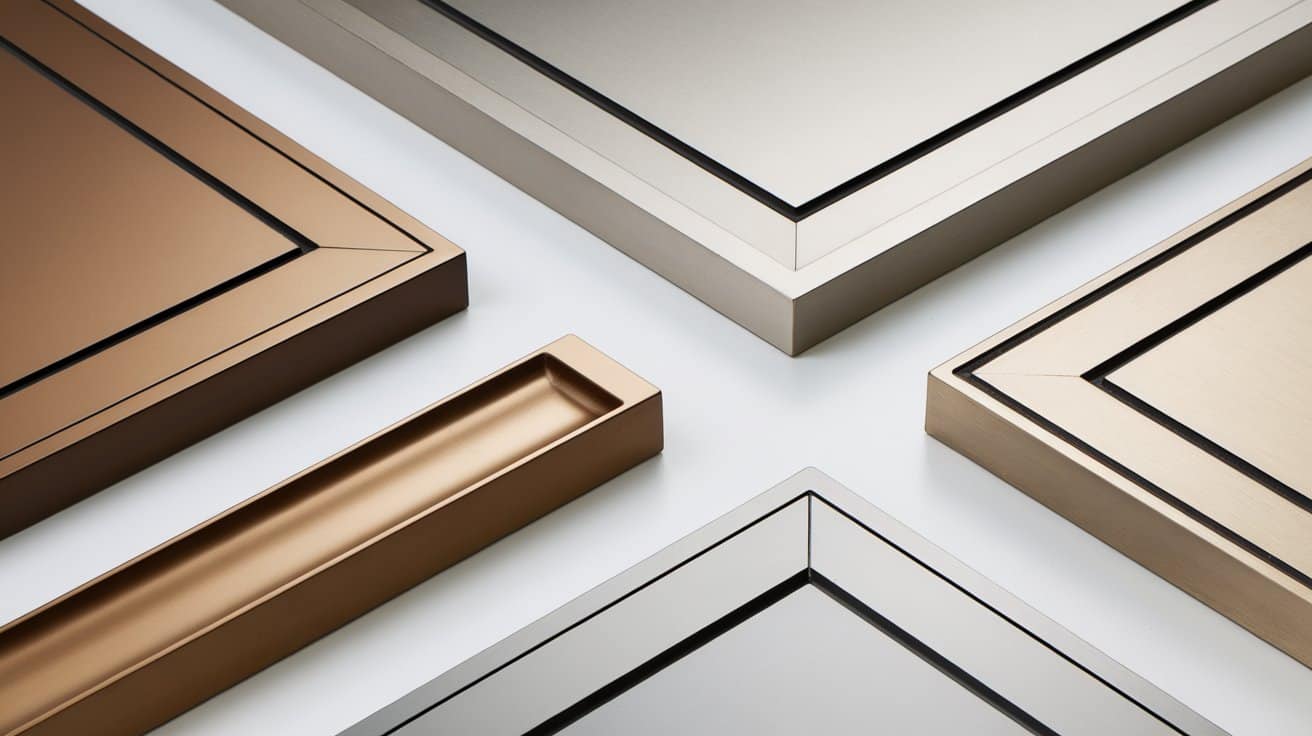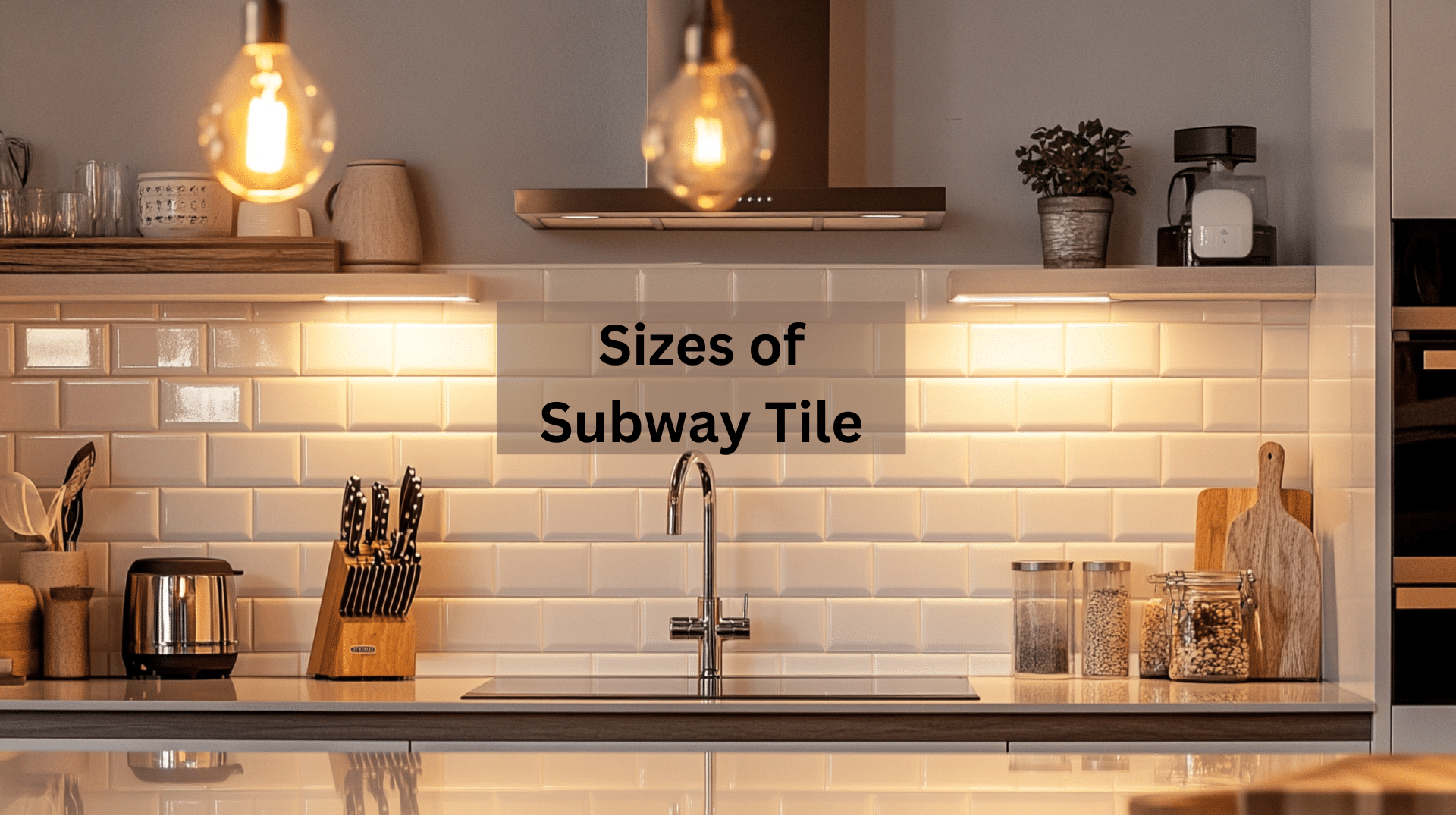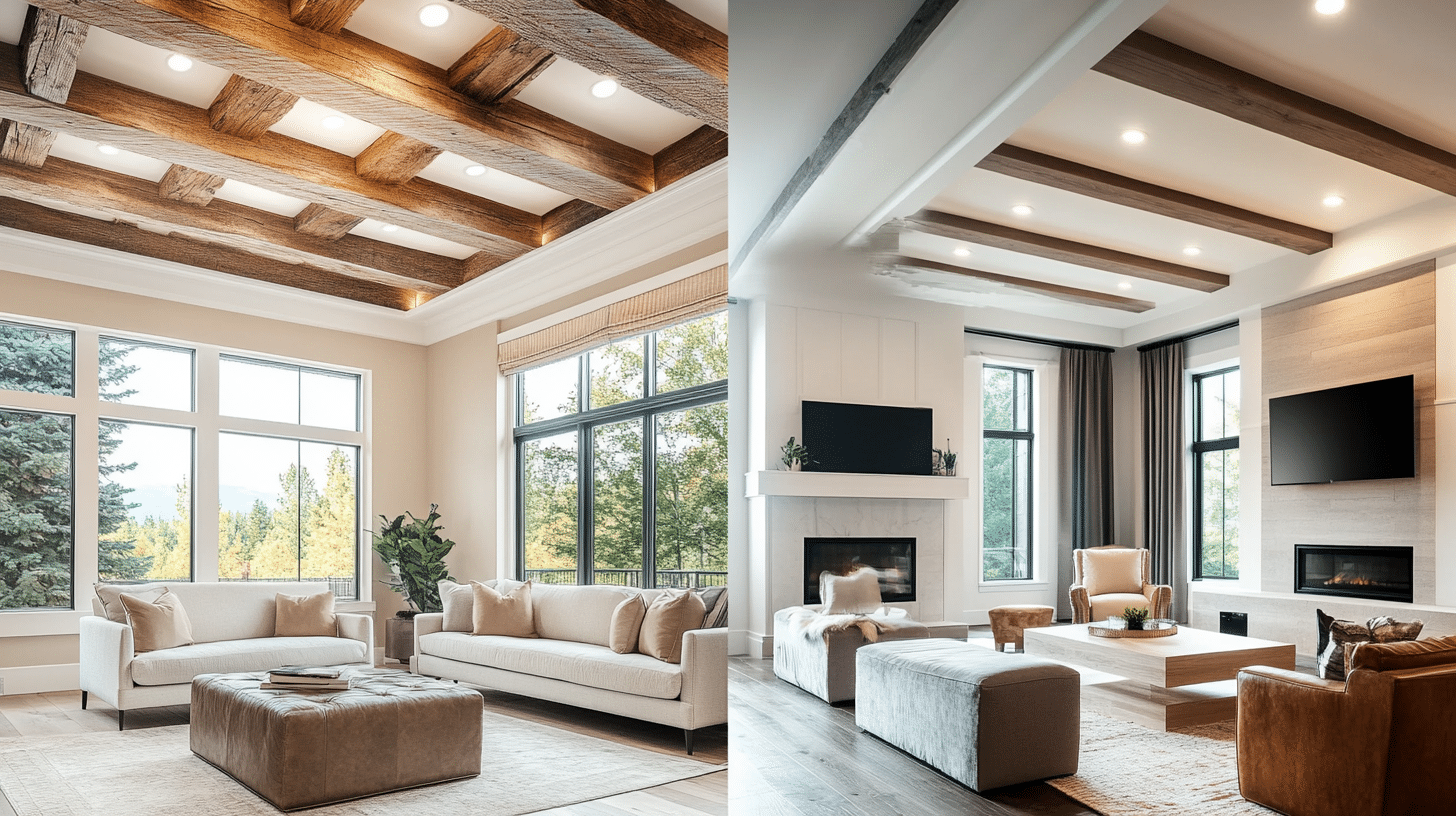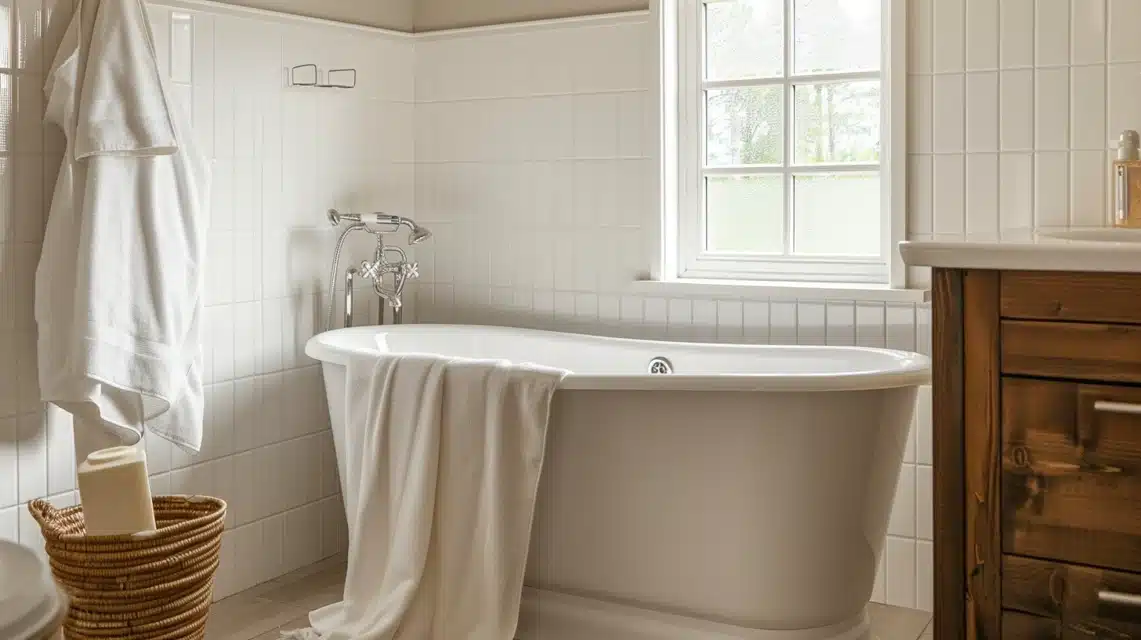5 Popular Interior Door Threshold Styles for Modern Homes
Have you ever noticed those small strips at the bottom of your interior doors?
They’re more important than you might think.
Interior door thresholds play a key role in your home’s comfort and style, but choosing the right one can be tricky.
Many homeowners struggle to find thresholds that blend function with aesthetics, often settling for options that clash with their décor or fail to address practical needs.
Don’t worry—we’ve got you covered. This guide will discuss five popular interior door threshold styles that are perfect for modern homes.
You’ll learn how each type can enhance your living space, improve energy efficiency, and complement your home’s design.
Let’s explore these threshold options to help you make the best choice for your home.
Main Types of Door Thresholds
Interior door thresholds come in various styles, each serving a unique purpose in your home.
These small but important components enhance the look of your doorways and play a key role in their functionality.
The right threshold can make a big difference in your home’s comfort and efficiency, from preventing drafts to bridging different flooring types.
1. Saddle Thresholds
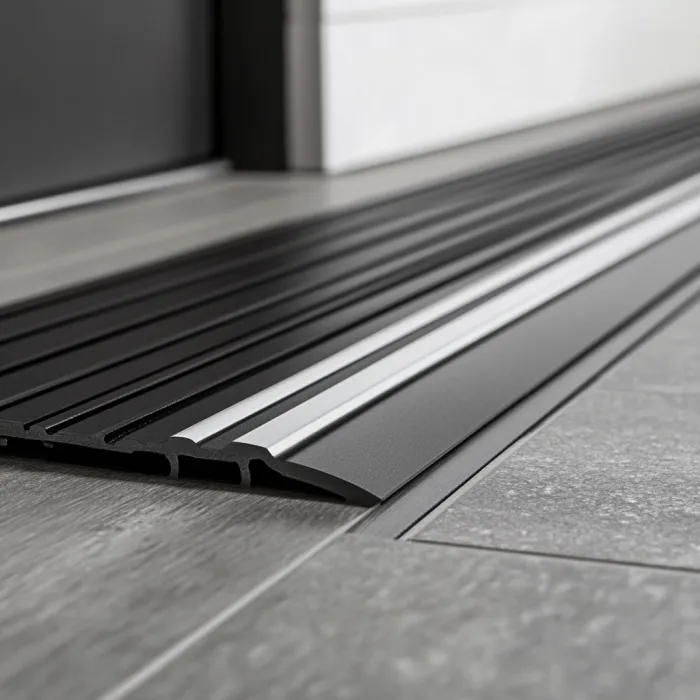
Saddle thresholds are popular for many homeowners due to their versatility and classic look.
Their raised center not only helps bridge small height differences between floors but also aids in water management, preventing moisture from seeping under the door.
When installing a saddle threshold:
- Measure the door width carefully to ensure a proper fit
- Consider the height of the threshold for your flooring
- Choose a material that complements your door and floor (common options include oak, aluminum, and brass)
Maintenance tip: Regular cleaning and occasional sealing (for wooden thresholds) can extend their lifespan and keep them looking great.
2. Bumper Seal Thresholds
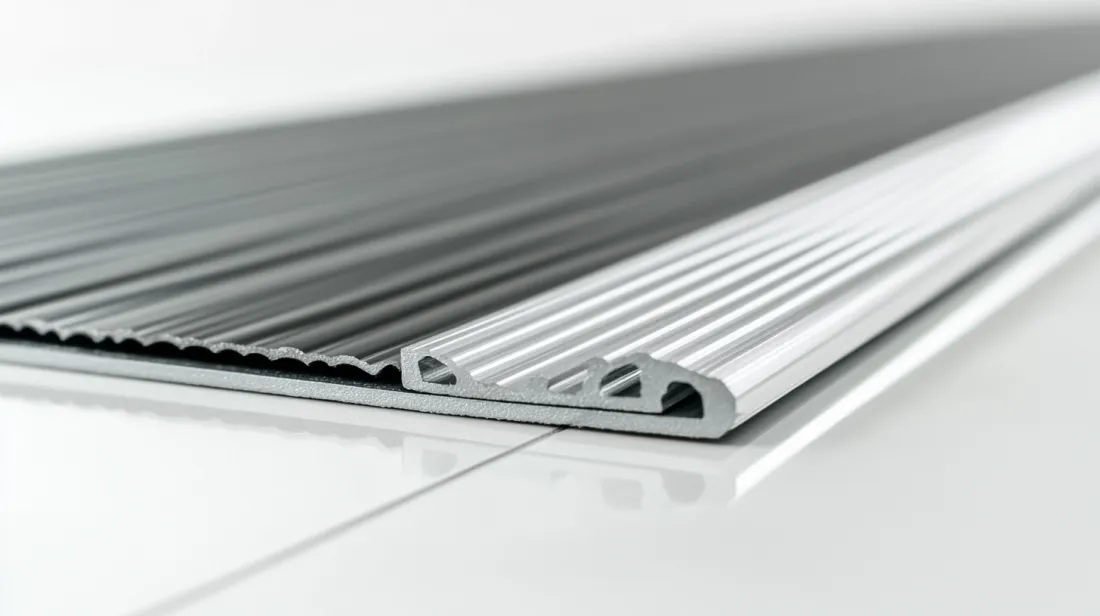
Bumper seal thresholds are excellent for creating a tight seal when the door is closed. This makes them particularly effective in:
- Reducing energy costs by preventing air leaks
- Keeping out dust, insects, and small debris
- Dampening sound transmission between rooms
When selecting a bumper seal threshold:
- Check the door’s undercut to ensure compatibility
- Look for adjustable seals to accommodate seasonal changes in door fit
- Consider the durability of the seal material, especially for high-use doors
Pro tip: Pair a bumper seal threshold with weatherstripping around the door frame for maximum effectiveness.
3. Heavy-Duty Thresholds
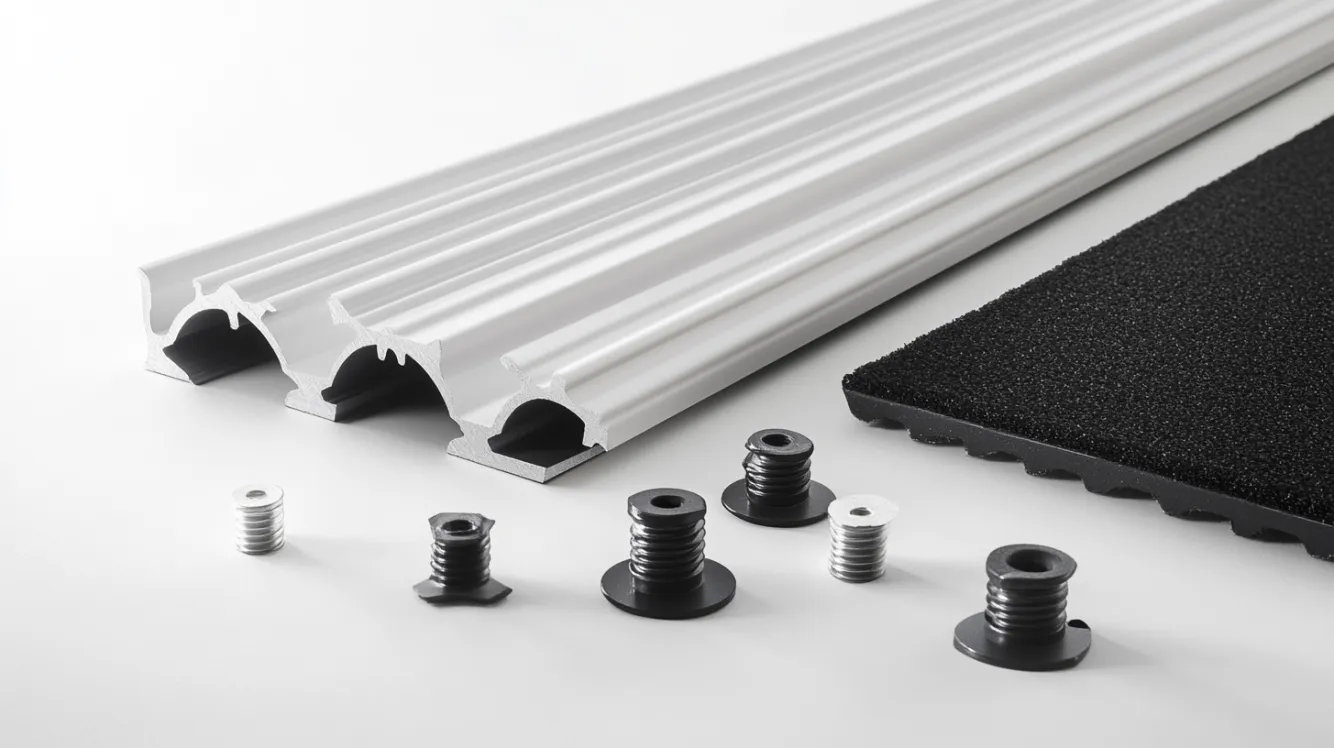
While often associated with commercial spaces, heavy-duty thresholds can be beneficial in residential settings, too.
They’re ideal for:
- Garage entrances where you might roll heavy equipment
- Mudroom doors that see a lot of foot traffic and outdoor elements
- Home gyms where heavy weights or equipment might be moved
Key features to look for:
- Slip-resistant surfaces for safety
- Corrosion-resistant materials if exposed to moisture
- Height adjustability to ensure a proper fit over time
Remember: While durability is key, you don’t have to sacrifice style. Many heavy-duty thresholds come in finishes that can complement your home’s decor.
4. Thermal Break Thresholds
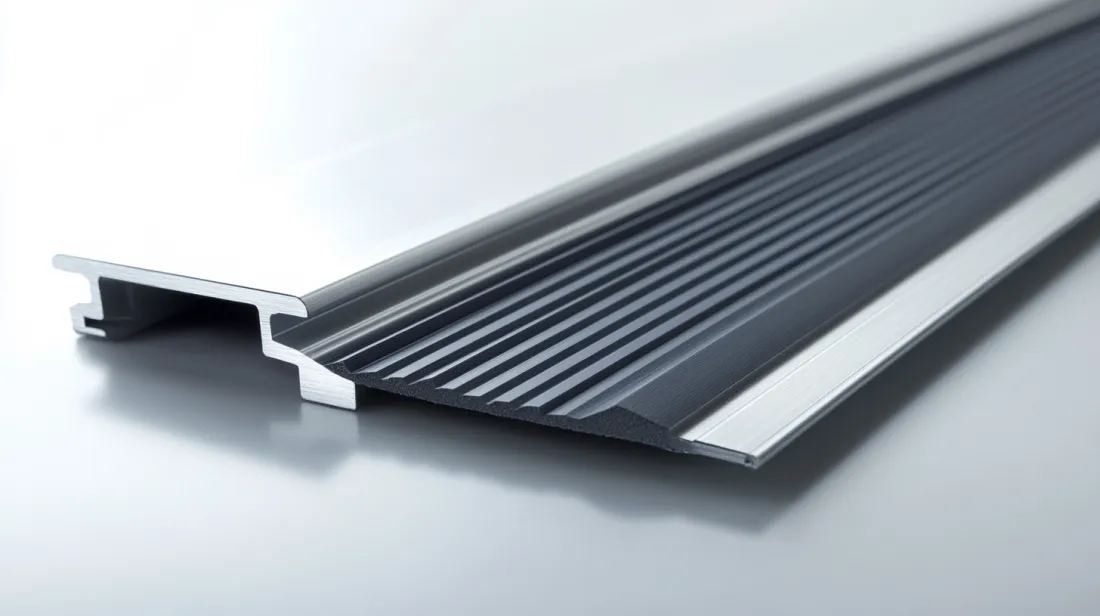
Thermal break thresholds are a smart choice for energy-conscious homeowners. They work by:
- Creating a barrier between indoor and outdoor temperatures
- Reducing heat loss in winter and heat gain in summer
- Minimizing condensation, which can lead to mold growth
When considering a thermal break threshold:
- Look at the R-value (insulation effectiveness) if provided
- Check for compatibility with your current door system
- Consider professional installation for optimal performance
Did you know that some thermal break thresholds can be combined with other types, like saddle or bumper seal designs, for maximum efficiency?
5. Dividers (Floor Dividers)
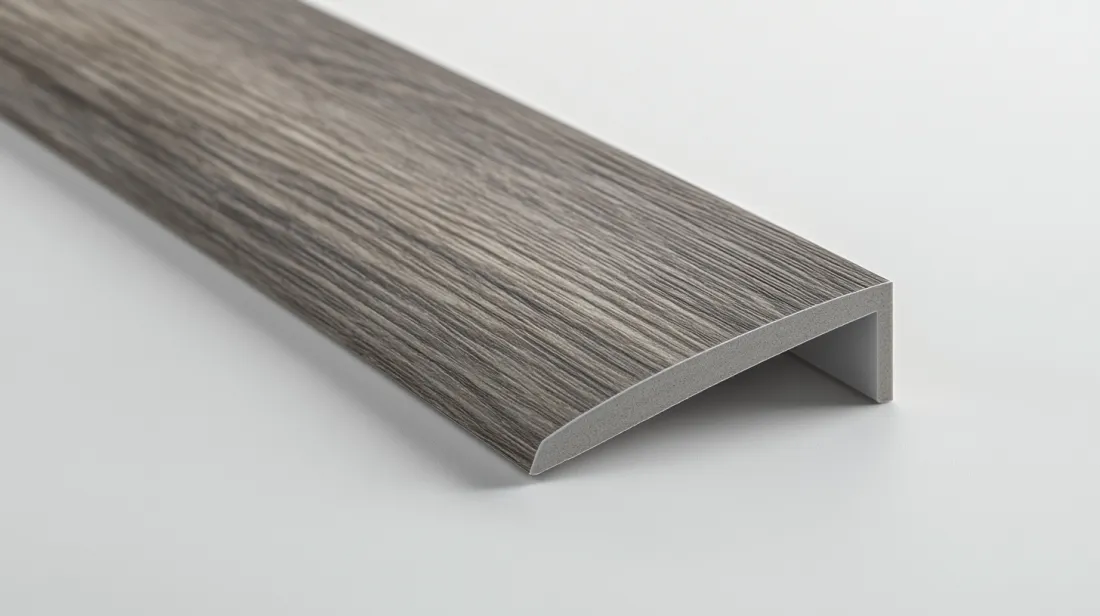
Floor dividers are not just functional; they can be a design feature in their own right. They can:
- Create visual interest between different flooring materials
- Allow for expansion and contraction of flooring
- Provide a smooth, safe transition for foot traffic and wheeled devices
Tips for choosing and installing floor dividers:
- Match the divider height to your flooring thickness
- Consider wider dividers for a more prominent design statement
- Use dividers as an opportunity to introduce complementary materials or colors to your space
Design idea: In open-concept homes, use floor dividers to define different areas without the need for walls subtly.
By carefully selecting the right threshold for each doorway in your home, you can enhance your living spaces’ functionality and physical appeal.
Remember, small details like these can often make a big difference in your home’s overall feel and efficiency.
Additional Insights and Practical Tips
Choosing the right door threshold involves more than just picking a style.
It’s about balancing how it looks and how well it works.
Let’s explore some key factors to consider when selecting a threshold for your home.
Material Selection
Door thresholds come in various materials, each with its strengths:
- Aluminum: Light, affordable, and resistant to rust
- Brass: Durable and attractive but may require more upkeep
- Stainless Steel: Very strong and long-lasting, ideal for high-traffic areas
- Wood: Offers a natural look but may need regular maintenance
- PVC: Budget-friendly and easy to clean, but less durable than metal options
When choosing a material, think about where the threshold will be used.
For example, metals like aluminum or stainless steel might be better choices in areas exposed to moisture than wood.
Functionality and Purpose
Thresholds do more than fill a gap. They can:
- Keep out drafts and improve insulation
- Reduce noise between rooms
- Prevent water from seeping under doors
Consider options like bumper seals or thermal break thresholds for better insulation and soundproofing.
It’s also important to consider accessibility. If you need a smooth transition for wheelchairs or want to reduce tripping hazards, look for thresholds that meet ADA guidelines.
Design and Visual Integration
Your threshold should complement your home’s overall look. Here are some tips:
- Match the threshold color to your flooring or door frame
- Consider the finish (matte, glossy, brushed) that best fits your style
- Look for designs that blend in or stand out, depending on your preference
Some companies offer custom designs if you want something unique for your home.
Installation Factors
Before buying a threshold, consider:
- Whether you can install it yourself or if you’ll need professional help
- If it fits properly with your door frame and floor type
- Any special tools or preparations required for installation
Proper fitting is crucial for the threshold to work well and look good.
Maintenance and Upkeep
Different materials need different care:
- Metal thresholds often need regular dusting and occasional wiping
- Wooden thresholds might require periodic sanding and resealing
- PVC can be cleaned with mild soap and water
Check your thresholds regularly for signs of wear.
It might be time for a replacement if you notice gaps, looseness, or damage.
Final Thoughts
Choosing the right interior door threshold can make a big difference in your home. We’ve covered five popular styles, each with its strengths.
Remember, the best threshold for you depends on your specific needs. Think about what matters most to you. Is it preventing drafts?
Are you connecting different flooring types? Or maybe you need something extra sturdy for a high-traffic area.
Whatever your priority, there’s a threshold that fits the bill. Don’t forget to consider the material and how it fits your home’s look.
A well-chosen threshold works well and adds a nice finishing touch to your doorways.
Ready to upgrade your thresholds? Look around your home to see where these handy additions could benefit you.
Your floors (and your energy bill) will thank you!

